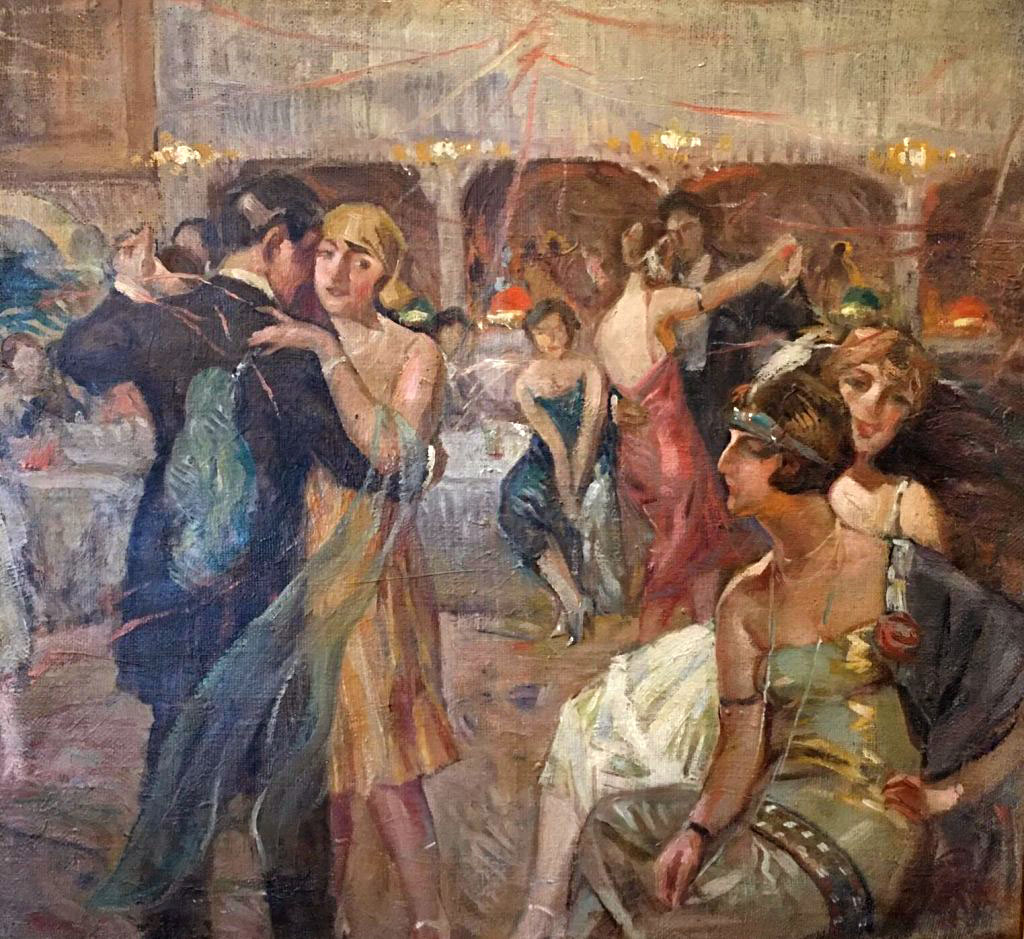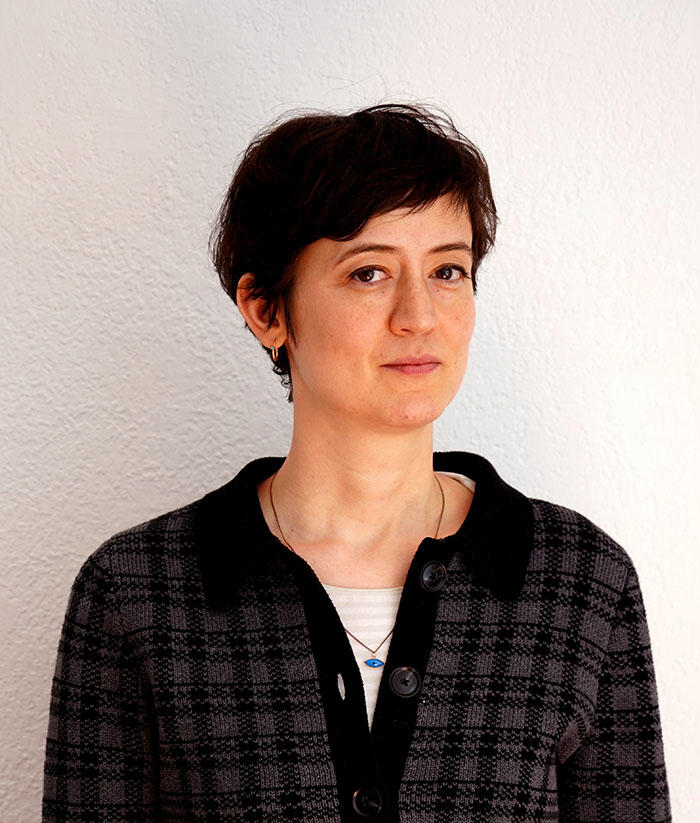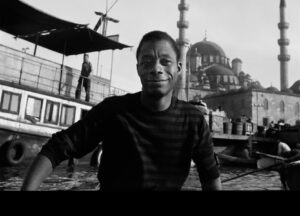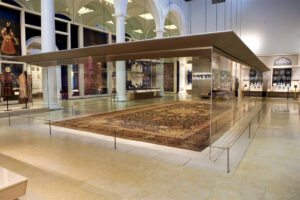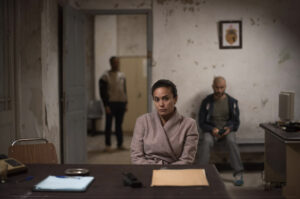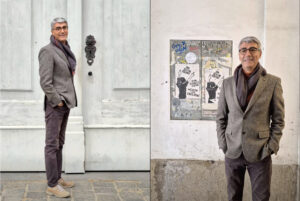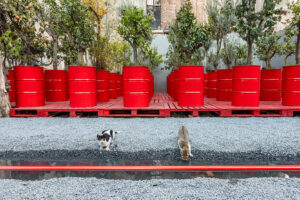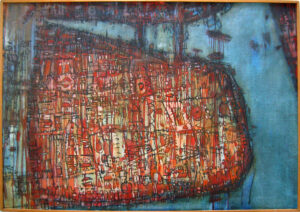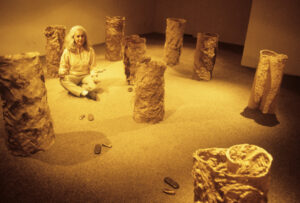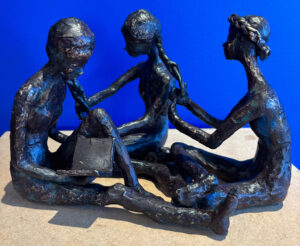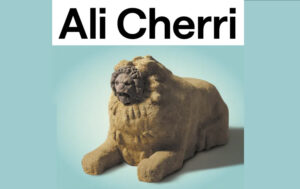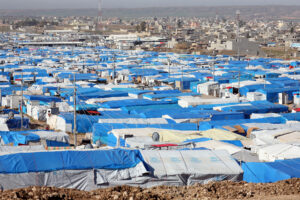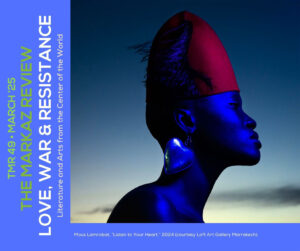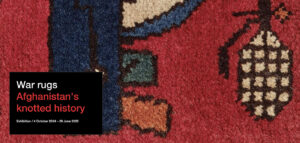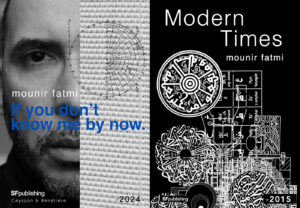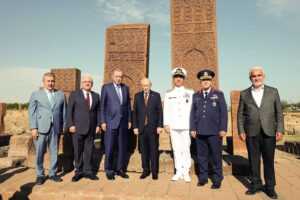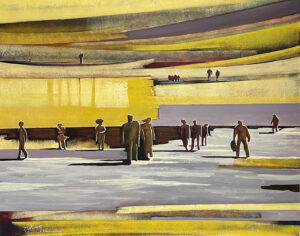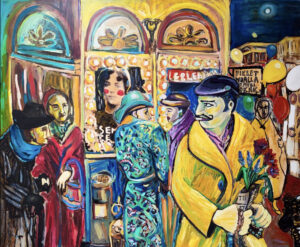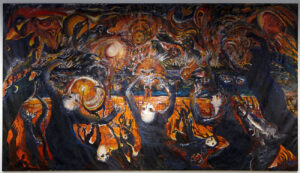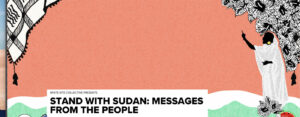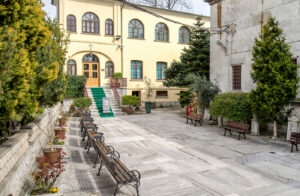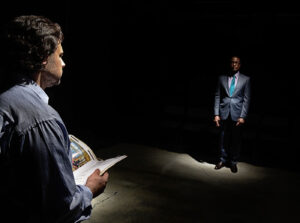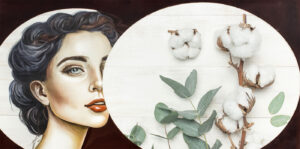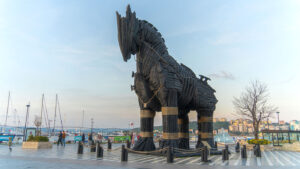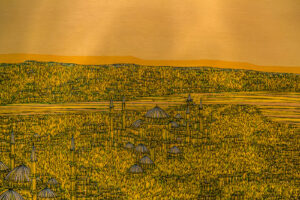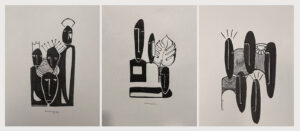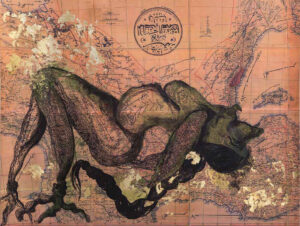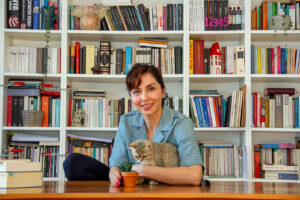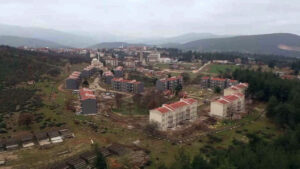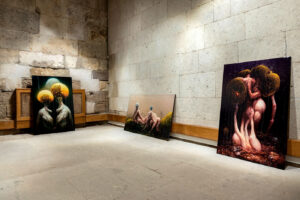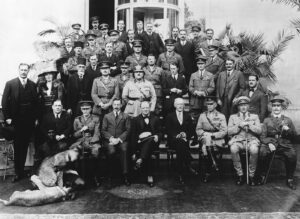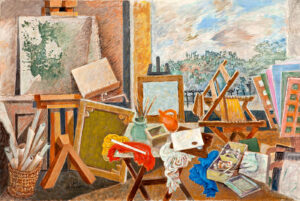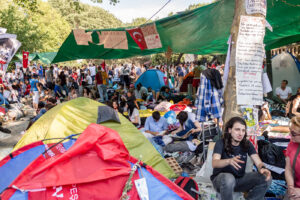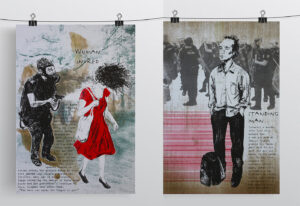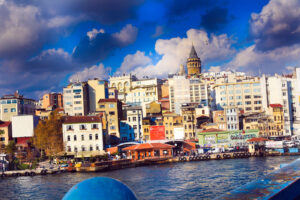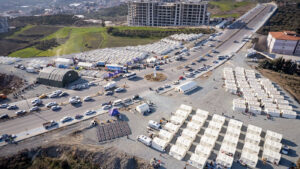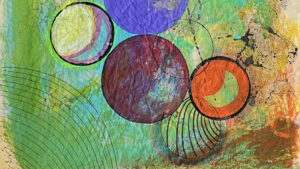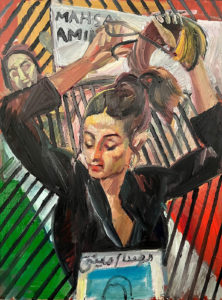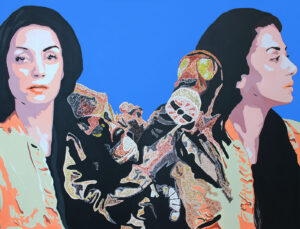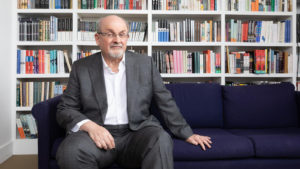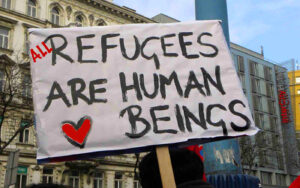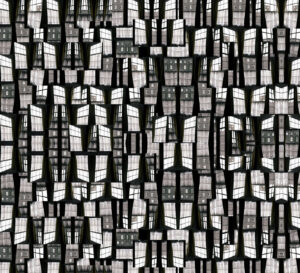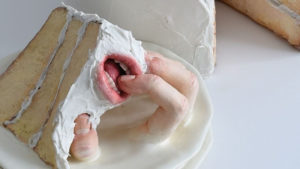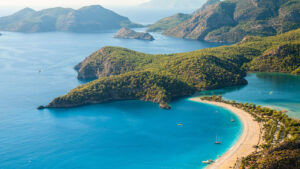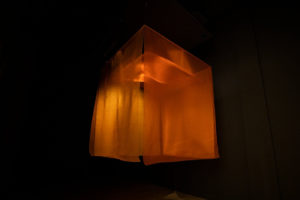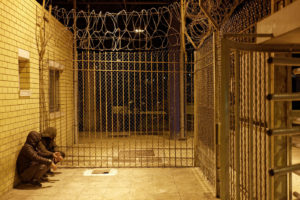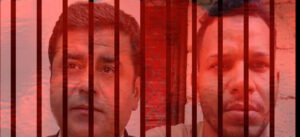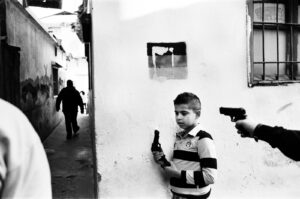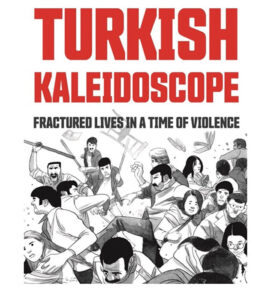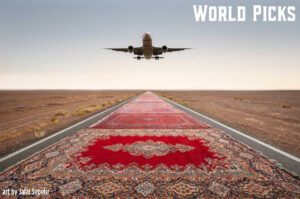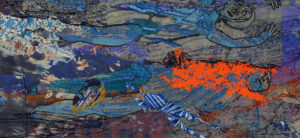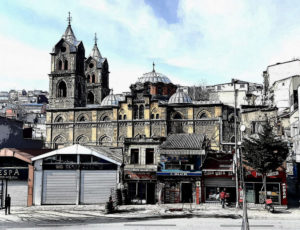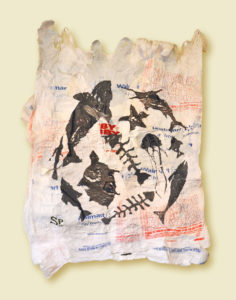The metaphor of the magnolia and the advent of the apocalypse meld in a Turkish artist’s imaginary.
Translated from the Turkish
I first encountered a reproduction of magnolias by painter İbrahim Çallı at my grandma Muazzez’s house in Denizli. In fact, if I remember correctly, this might have been the first time that I’d ever seen a painting. It might’ve even been a random month ripped from an old calendar. I remember it hanging from a slightly high-up place in my grandmother’s house, in the room where she served breakfast on a round metal tray. We had to look up at the painting, which must have given it a sense of authority. It was probably hung up there to hide an eye sore like an old outlet for a stove.
There was also a real magnolia tree in front of my grandma’s house. The buds of this large flower were collected right before they started opening in the early summer, and its petals were secured with a rope to make sure the flower didn’t fall apart. After that, it was placed into a full glass of water. I was warned a thousand times not to let the magnolia touch my nose while I sniffed it, which I did quite often. Magnolias have a lemon-lime refreshing scent. But if my nose touched the flower while I was smelling it, the flower would turn black. If my nose didn’t touch it at all, then within two or three days the flower would open, its leaves scattering, exposing its bare naked organ. Even just attempting to sniff the flower could kill it.
The magnolia always brings to mind famous Turkish singer Zeki Müren’s song “My Beautiful Magnolia,” with the lyrics koklamaya kıyamam benim güzel manolyam – “I wouldn’t dare sniff my beautiful magnolia.” In other words, the lover wouldn’t dare touch their beloved. I think that is because, if touched, the woman/magnolia will lose her “purity.”
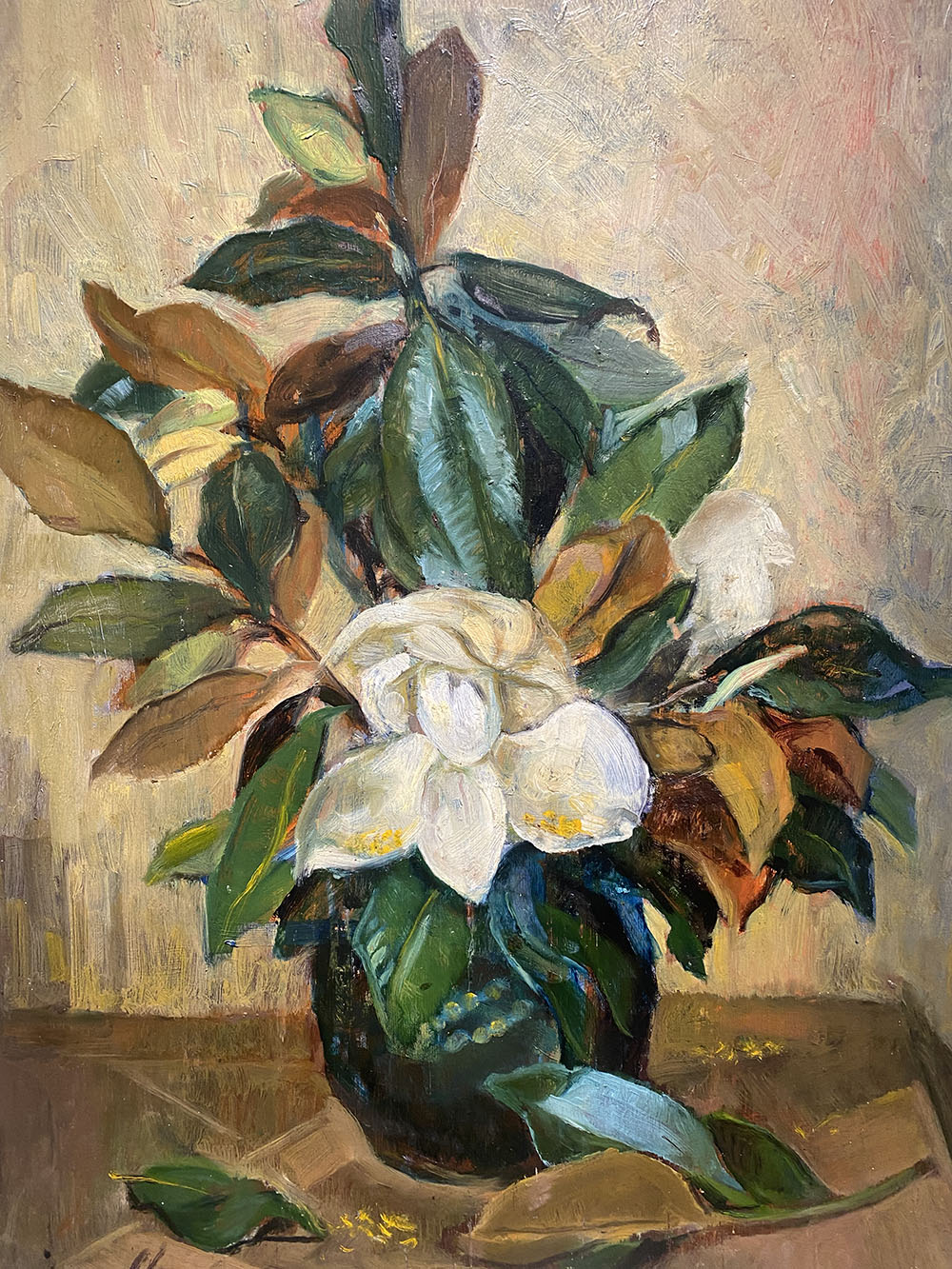
In the southwestern city of Denizli, as in the rest of Turkey, it’s believed that the very act of touching women could ruin them. In fact, you could hurt the magnolias whether or not you smelled them; the magnolia represents a certain fragile femininity that could be overwhelmed and destroyed at any moment. Nonetheless, Denizli’s natural plants are maqui, a thick, shrubby evergreen underbrush typically found on the shores of the Mediterranean Sea. These modest bushes don’t require much water. They can endure hot weather, and their colorful flowers have an aromatic scent.
Grandma proudly told me that İbrahim Çallı is a world famous painter from Denizli. This thought excited me as a kid who loved to paint, but I had mixed feelings about the magnolia painting. I loved it but it also bored me to tears because it depicted something that lived right in my grandma’s front yard: a magnolia tree.
My grandma was somewhat of a distant woman and spoke little. When my parents vacationed in Pamukkale, a town just north of Denizli known for its thermal springs, they dropped us off at our grandparents’ house, where we were watched with care and the utmost attention. And by that I mean every time we stayed at her place grandma would make my sister and I memorize a prayer. She gave us the PowerPoint version of a religious education, giving us answers to the questions that would surely arise here and in the hereafter.
In the summer of 2017, I spent three months at the Paris Cite des Arts’ guest artist program. One morning, while making a montage on my computer, I felt a vibration coming from somewhere below. A hum buzzed through my headphones, and the windows of my apartment rattled. Curious about what might be happening, I ran to the window. From there, I spotted an endless row of trucks slowly making their way to the front of the building. Every one of the truck’s cabs had been converted into a DJ set, and they were blasting techno music. Behind every truck, 100 or so youth madly danced like there was no tomorrow. Startled, I quickly called my Austrian artist friend, and together we rushed downstairs to watch the dance party. The smell of alcohol and clouds of weed smoke drifted in. It was a never ending parade of dancing Parisian teenagers. I watched for a while, and then suddenly a strange sense of déjà vu struck me. Where could I have possibly remembered this from?
The moment quickly came back to me. It was one of those weekends spent at my grandma’s house, when she explained the impending apocalypse day. She told my sister and I that when the apocalypse begins, we would hear music coming from somewhere. It would be such a loud sound that the windows would shake; instead of using the word “music,” grandma would say “jazz.” There would be jazz. The “mumins,” the believers, would quickly realize what was going on and go on their knees to repent by doing namaz prayer. The “kafirs,” the faithless, would curiously dash over to the window and realize that it was a parade of magical musical instruments playing on their own — by then they would have missed their chance to repent. Huge horns would come out of their heads and they wouldn’t be able to pass through the doors of the house because the horns would be massive. They would repent, running back and forth in the house — but it would be too late because the gates of heaven would have already closed. Turns out the Apocalypse is a techno dance party and those who indulge in anything pleasurable would go to hell with the rest of the sinners.
My grandma told this story so that I would do the right thing when the time came. But even as a young girl, I knew I would’ve definitely run to the window and looked out. Even then, thinking about the potential consequences of my future actions made me feel upset.
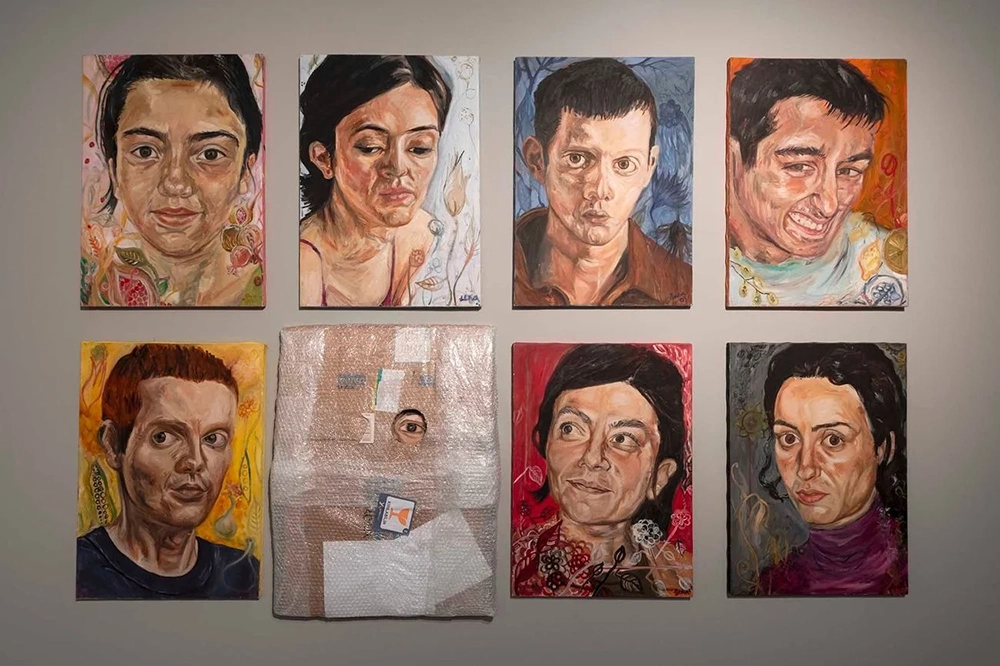
It happens that painters’ most popular still lives portray flowers that quickly wither. All of the magnolias that İbrahim Çallı portrays become immortal with their temporality. Çallı grew up in Denizli, but when I was a kid there weren’t really any full-time working artists around and only a few exhibitions. And besides, it felt like the apocalypse could happen any day. A half-human, half-animal creature that wouldn’t be able to fit through any doors because it wants to have fun — who would grow horns and jam themselves into rooms — symbolizes the life of a woman living in a small city in Turkey much more accurately than a magnolia. What a huge amount of her authentic self a woman has to give up because of the deep grief she feels for her unrepentable guilt. In that sense, a woman reveals the supposed “creature-like” side of herself. How authentic could anyone be in an environment where the possibility of having fun is equated with the apocalypse? What could be mourned in lifetimes as short lived and fragile as magnolias? What’s being passed down from one generation of women to the next?
I shared my “apocalypse day” story with a friend. His dad’s explanation of the apocalypse was vastly different from my grandma’s. On that day, people would be out on the streets fucking like dogs. That was a Turkish middle-class family dad’s version of the apocalypse, circa 1980s. Today I believe it’s compelling to think about our own apocalyptic visions because war and global warming are making the apocalypse into an actual doomsday scenario.
Maybe the thing we fear the most is also what we most want.
Sena Başöz’s original Turkish text appeared in 5Harfliler.com.



